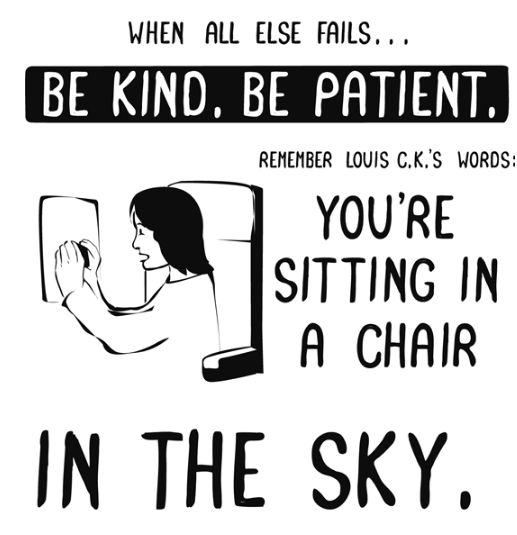Airplane Etiquette Requires Patience and Elbows at Your Sides
Share

Since the Great Recline Debate of August 2014, in-flight etiquette has been a popular topic of conversation among travelers. Debrett’s, the ‘trusted source on British social skills, etiquette and style’, recently released an updated version of their Handbook with a section on airplane etiquette. According to the experts reclining is acceptable, sometimes:
“Ease your chair gently into a reclining position, which will avoid a sudden invasion of the limited legroom of the passenger behind, but remember that it’s selfish to recline your seat back during short daytime flights.”
These reclining rules only apply when elbows are tucked in, alcohol is minimal and jokes are kept away from the topic of turbulence.
Nathan W. Pyle of Buzzfeed is another, somewhat more contemporary, etiquette expert. His in-flight advice is common sense based. If you tend to sleep on planes, choose the window seat rather than the aisle seat and if your seat neighbor has headphones in, it’s likely they don’t want to chat with you. Territorial armrest behavior, luggage bin hogging and smelly feet top the unfavorable lists when it comes to being a pleasant traveler and seat neighbor.
The number one rule of airplane etiquette is patience. Nobody particularly enjoys being tucked in close to a stranger for a long period of time but in order to fly, we must, so settle in and sit tight. Also, regardless of how fast we board, get our meals and disembark, we’re all generally caught in the same line-up at customs. Lastly, don’t take frustrations out on fellow passengers or flight crew; they did not design the plane, choose your fellow passengers or delegate you to an economy seat. As Debrett’s stresses, “at 35,000 feet above sea level, good manners are paramount.”


